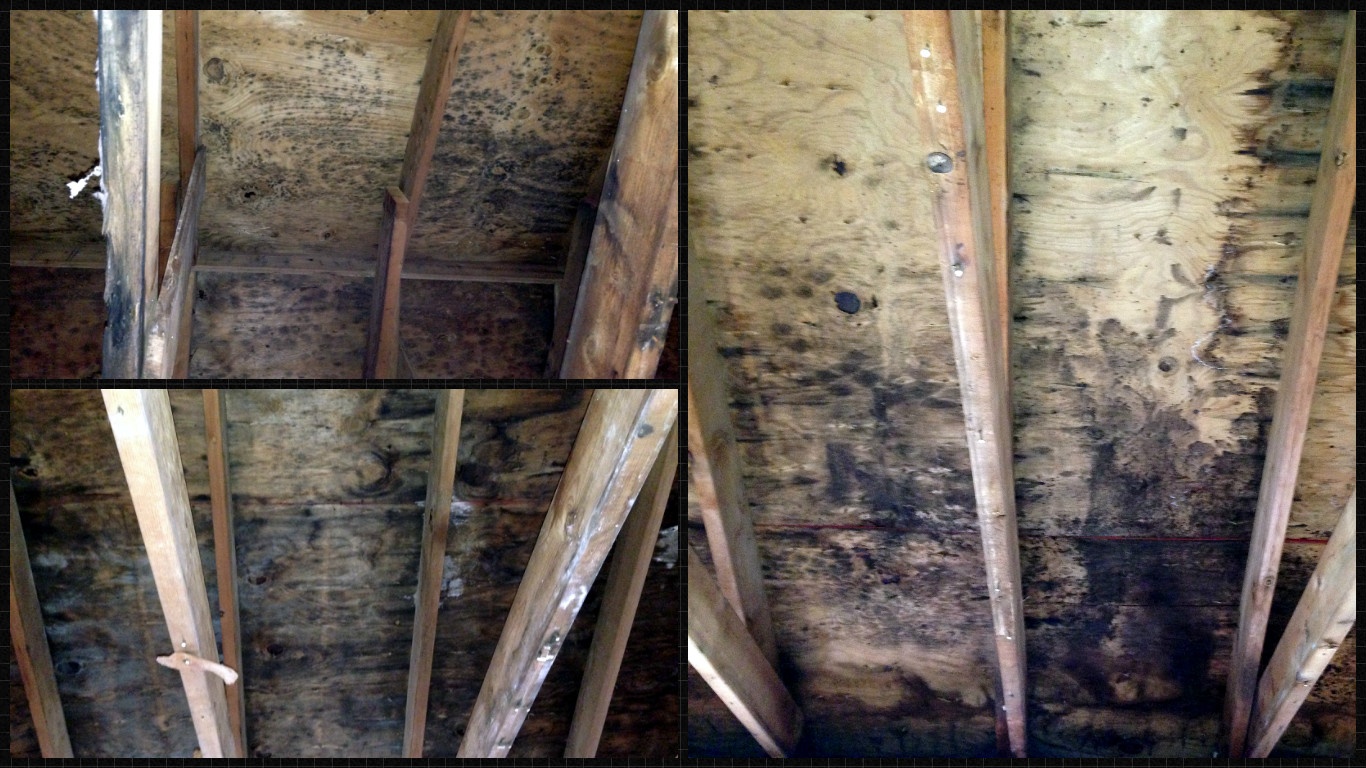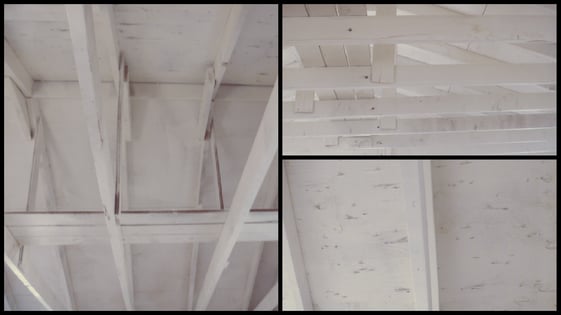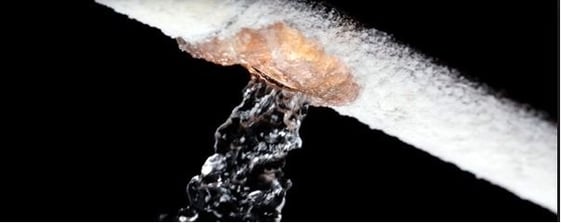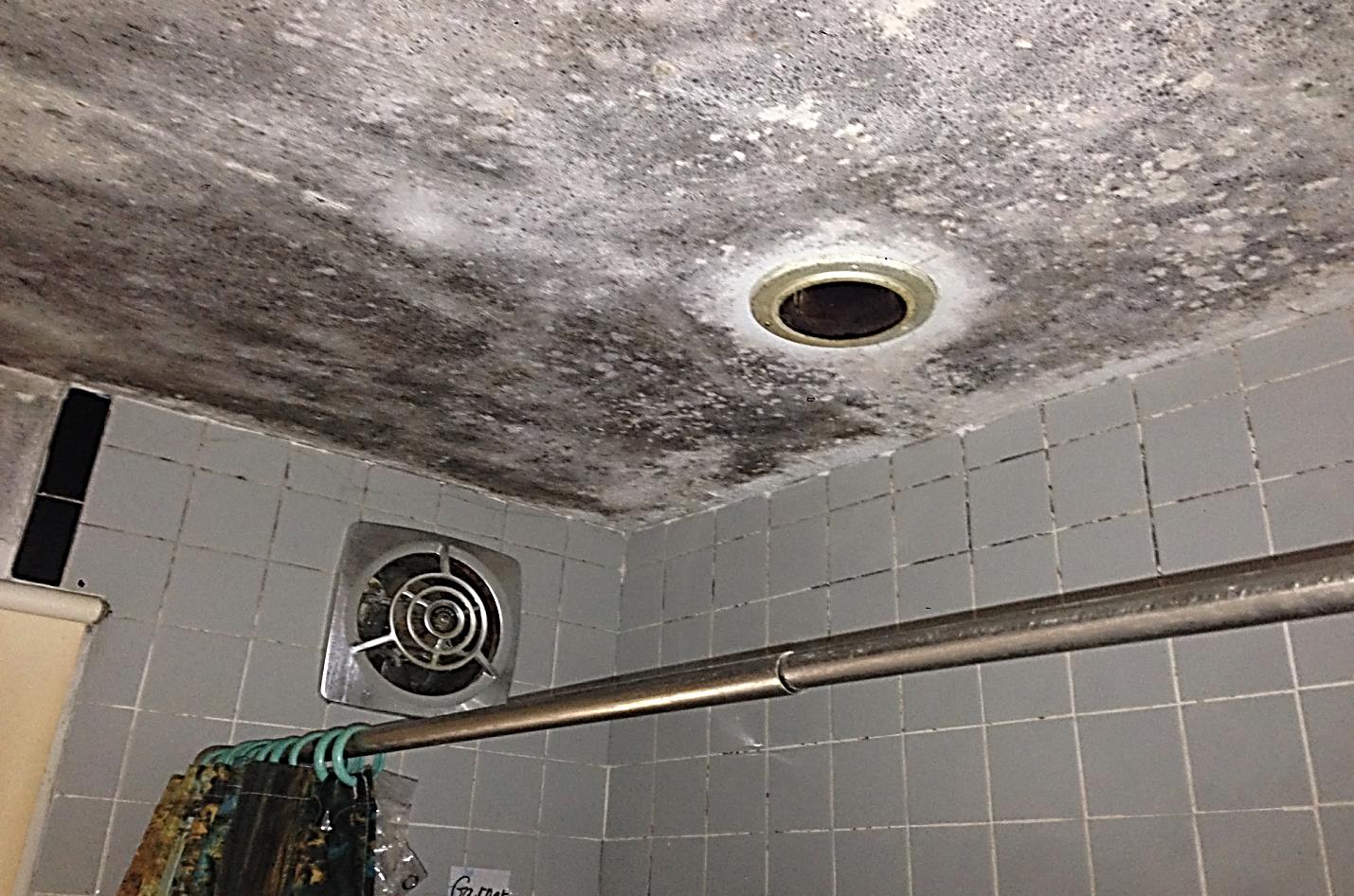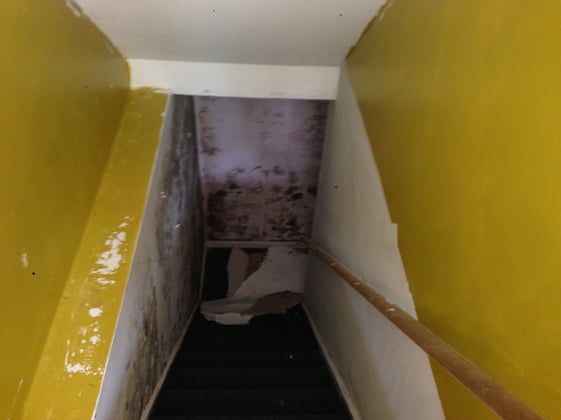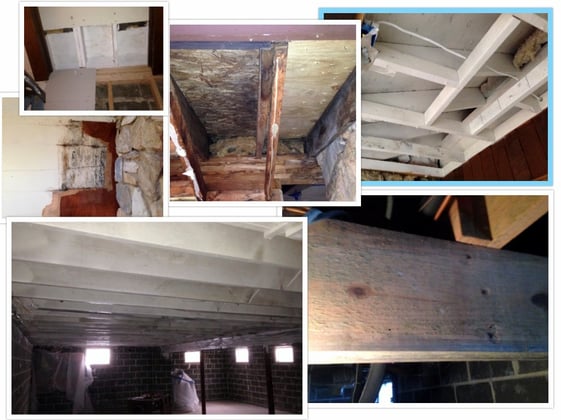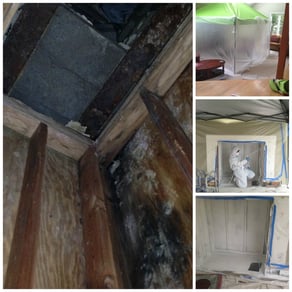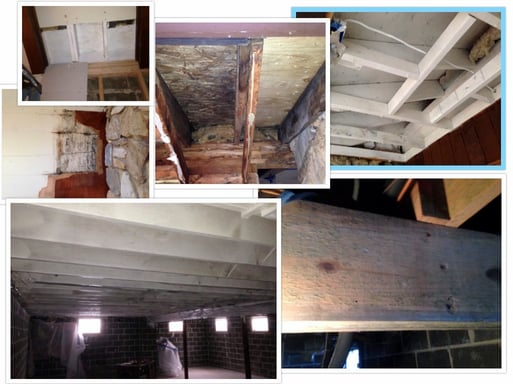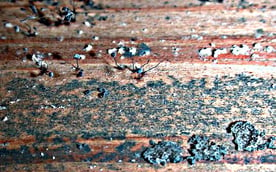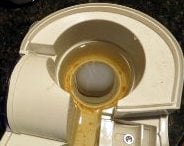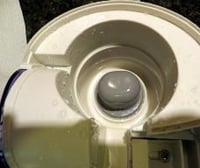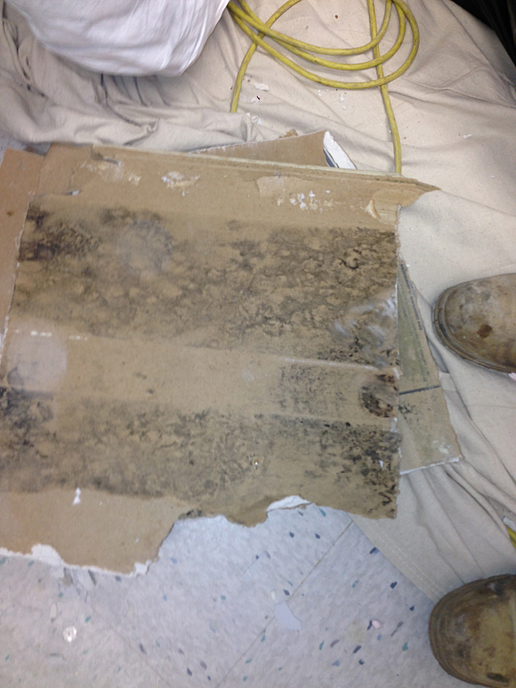Why is mold so prevalent?
Mold is a four letter word and strikes an emotional cord in people when spoken and encountered. Health concerns are a major factor on people’s perspective of mold. Mold is ubiquitous in our environment and to have a mold free environment is practically impossible. That said, if you see growth (often described as discoloration), you have mold that is or was actively growing and spreading. In short there is an environment that is allowing the mold to grow, which is a preventable situation. Here are some of the environmental and situational causes of mold growth.
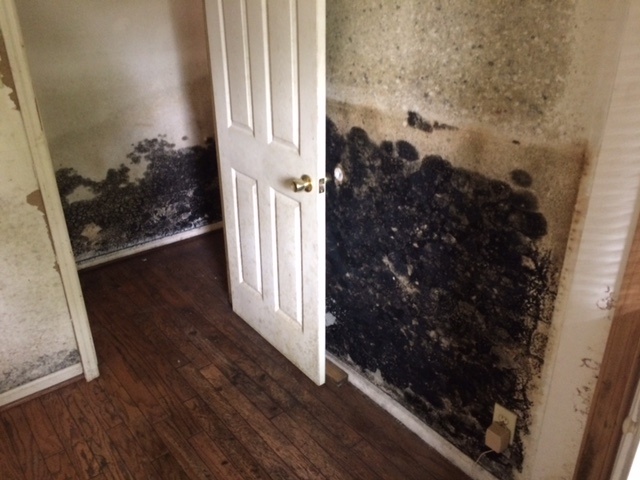
Aging Housing Stock. (Deferred Maintenance)
As the homes in the United States get older, the repair and maintenance needs for these homes are on the rise. Older homes are in need of much more care. Gutters clog, caulk dries out, foundations settle and cracks appear, soil erodes away from foundations, dehumidifiers break and don’t get replaced, sump pumps die, exhaust fans break. Homes that have been missing general upkeep have been labeled deferred maintenance abodes.
When gutters are filled with debris water cannot flow from the roof and away from the dwelling perimeter. Water can pour over lengths of horizontal gutters placing water close to the structures foundations and allowing moisture to enter subterranean spaces.
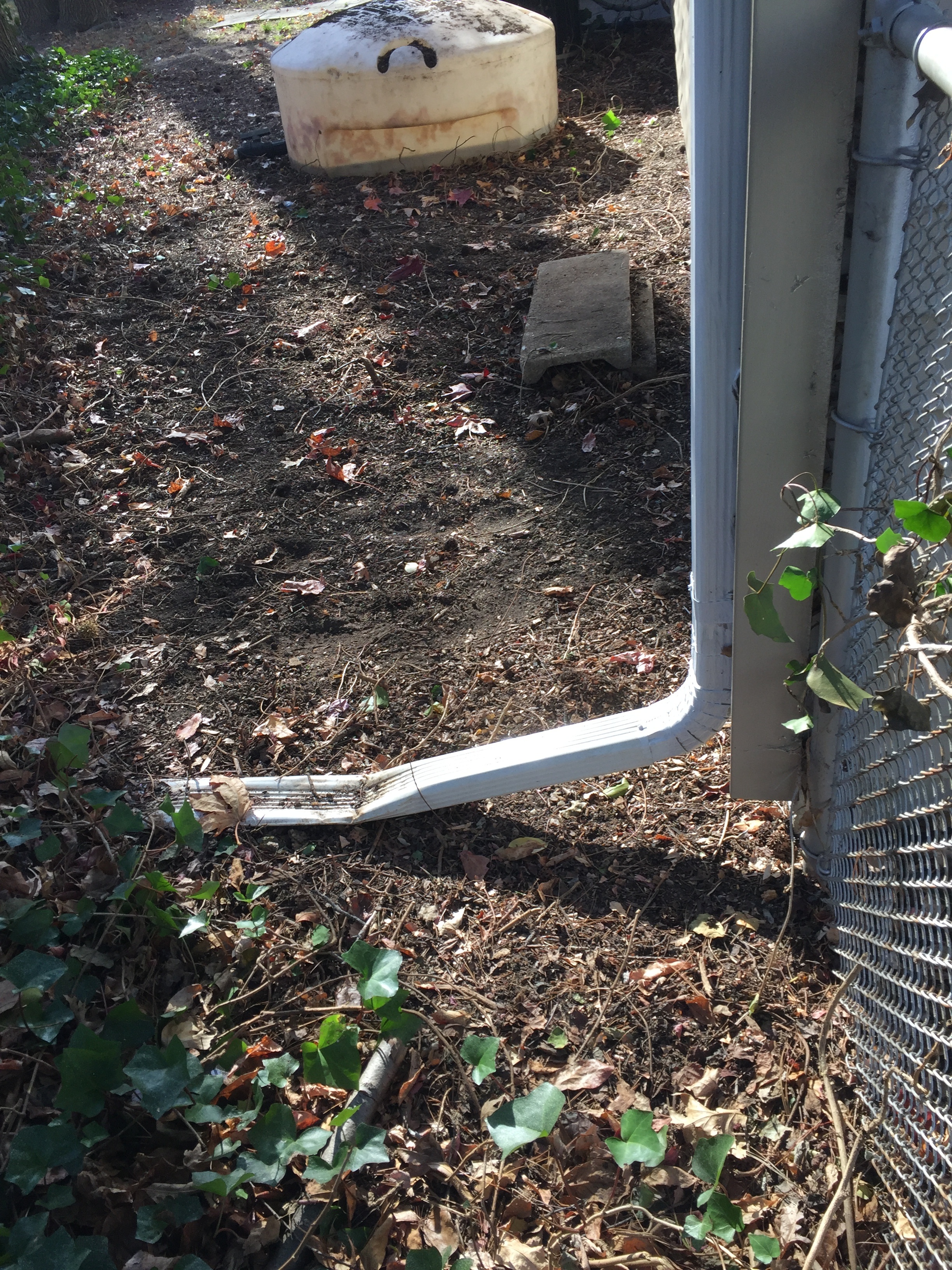
Caulk around windows dry out and holes appear. Rain events can allow water to enter through worn caulk and enter the building structure.
Over time, foundations can settle and cracks can form. Hydrostatic pressure is strong (ever get pushed down by a wave at the beach?). Water from rain events or melting snow can enter these cracks and crevices; again allowing moisture to enter the space.
All perimeter foundations should have what’s called in industry parlance as “positive drainage”. Meaning the exterior grade around a foundation should slope away from the foundation, thus diverting water from the foundation.
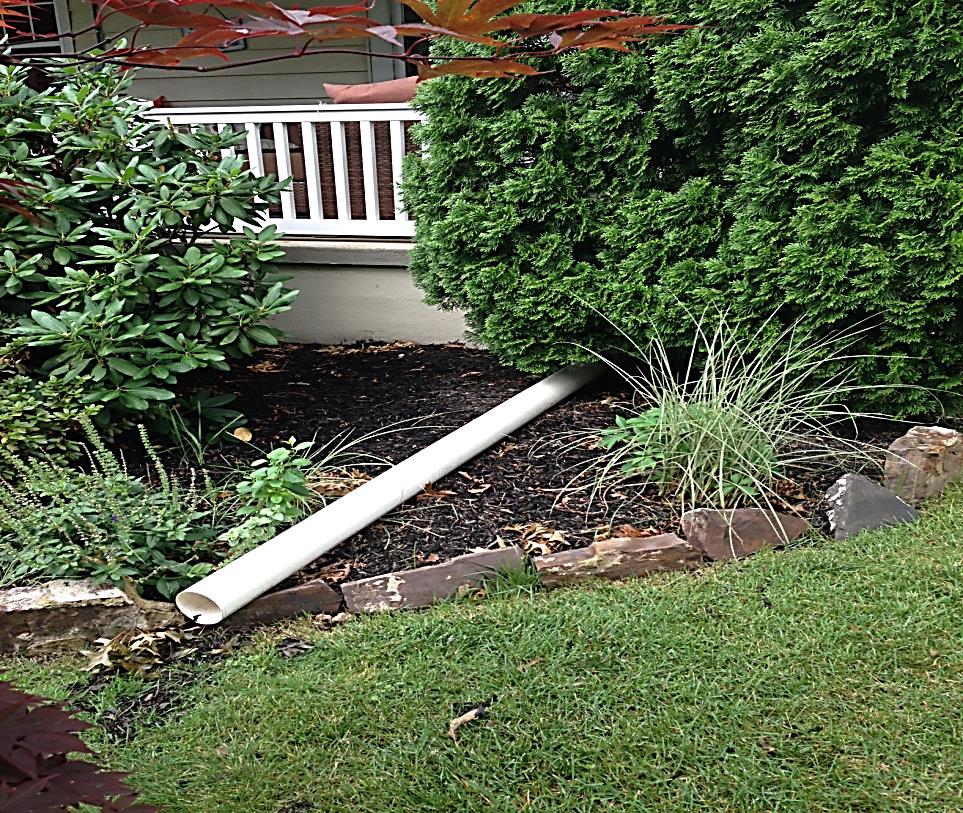
Dehumidifiers can be called the devil’s machine, how many times are you going to trek down the basement and empty the dehumidifier? Until you simple stop doing it (leaving a full tank) and just simple turning off the unit. Dehumidifiers don’t have to break, they just have to stop capturing moisture and discharging it. Eighty percent (80%) of residential single family units that have mold below grade (basements and crawlspaces) had a dehumidifier present, but it was not operating.
Set dehumidifiers to 55 and plug a hose into the unit and drain it directly to a sump or sink. You do not need the unit set to 60 or 65 like the one in the photo

Sump pumps are the workhorse of a high water table and wet basements. They are your last line of defense to keeping storm events out of your home. These electric pumps will eventually clog and burn out and some simply die from years of unappreciated faithful service.
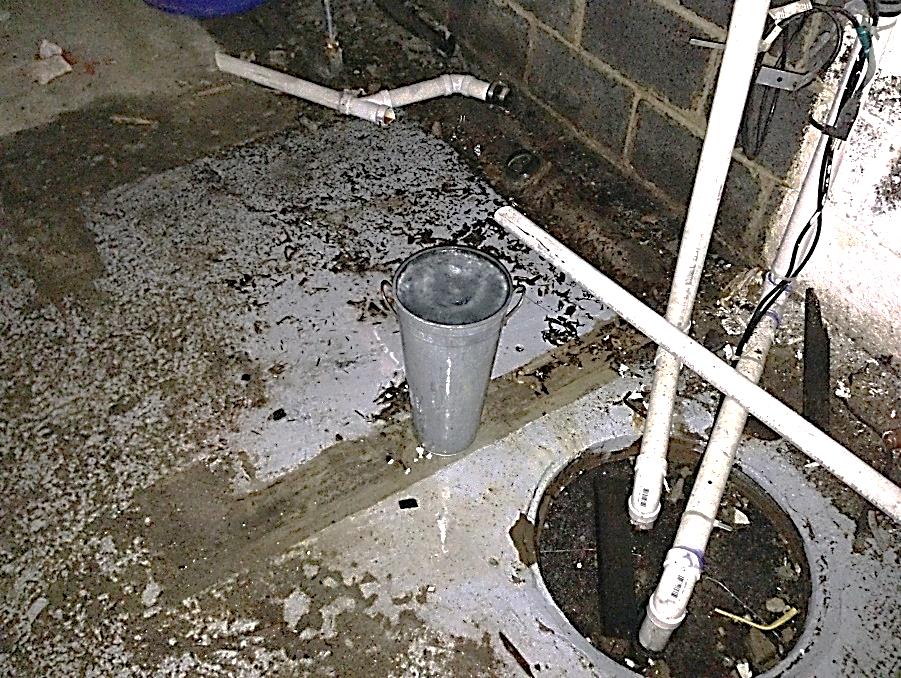
Sump sumps? Cover the crock, water evaporates and adds to over all moisture.
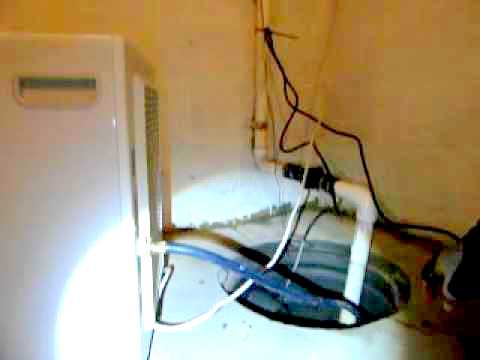
.Exhaust fans are loud and who wants to exhaust anything anyway from a bathroom? These fans just make you cold and in an attic, it just makes a lot of noise. But these locations when fans operate, help control environmental conditions that can hinder mold growth.
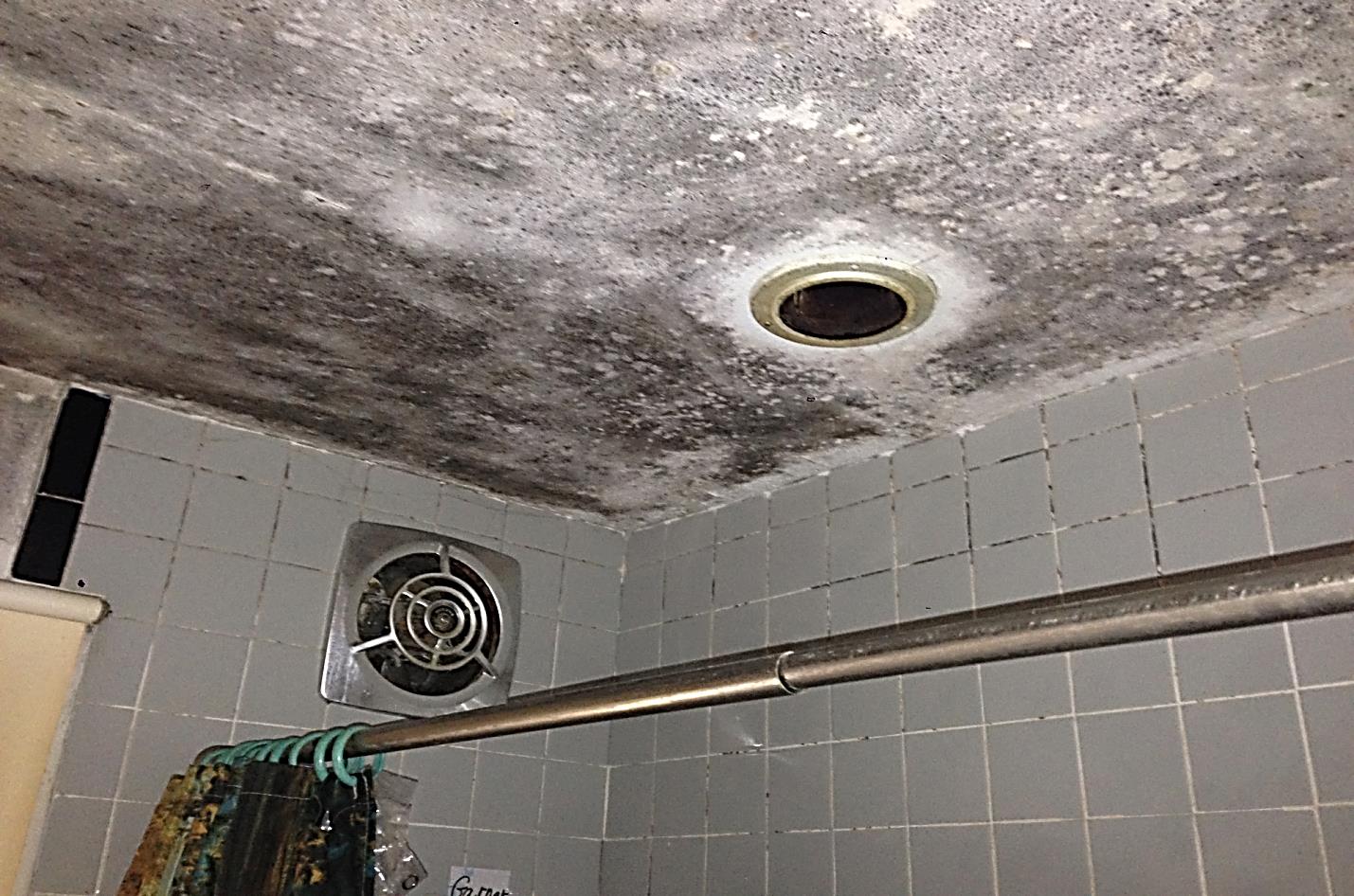
All these seemingly minute items can allow a conducive environment for mold to grow. Truth be told most mold impacted areas did not get moldy over night, most have had a slow steady mold buildup for years and the older the home the more time mold has to grow. The environmental disaster event, where a dwelling is flooded, roof leaks, plumbing line breaks, do happen but they are the minority on average. Attics, crawl spaces, basements by nature of their unconditioned environment are hot beds for mold growth.
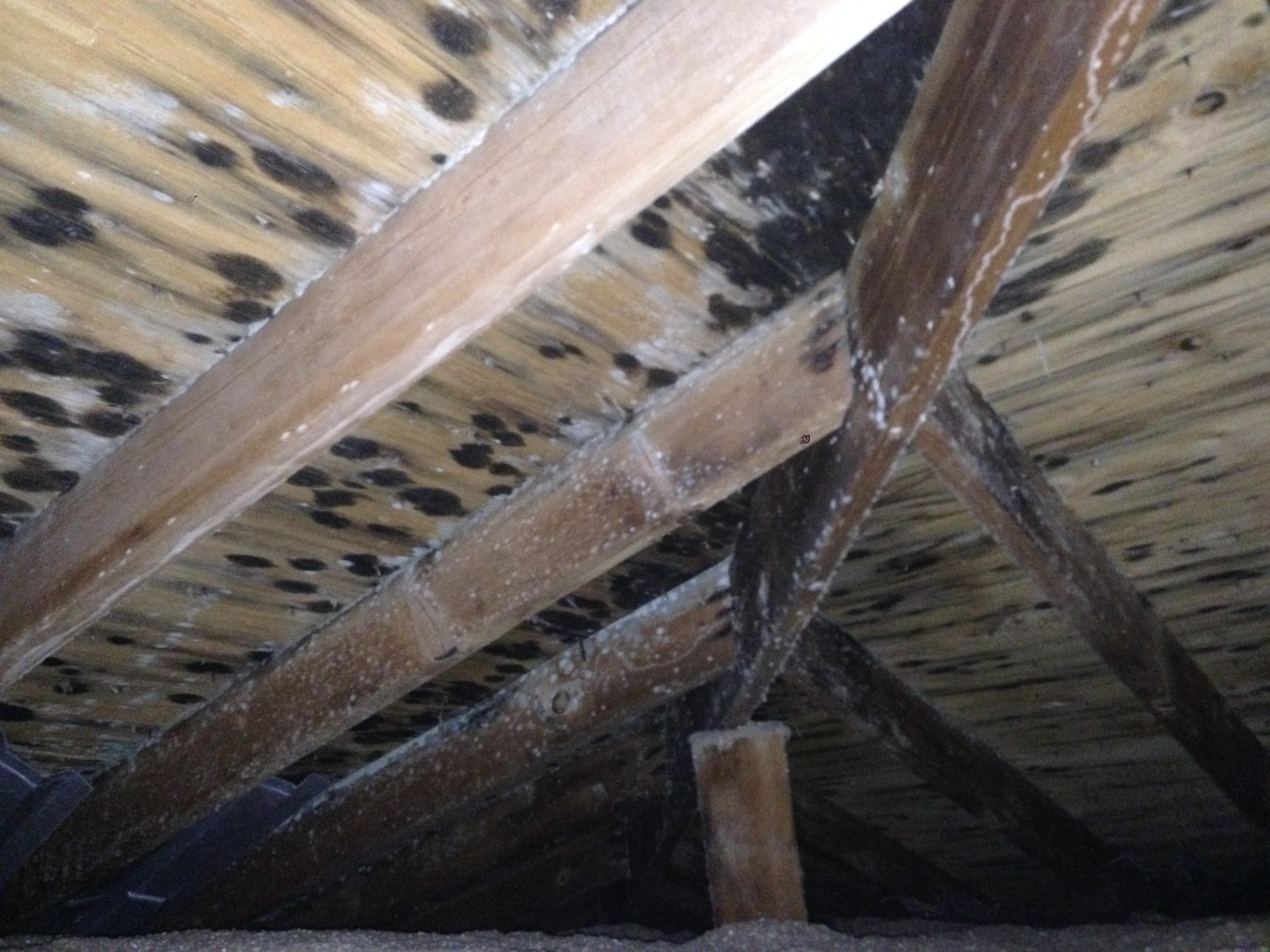
Aging Population.
As long time homeowners get older, they age out of skill sets required for homeowner maintenance. As general mobility decrease so does the ability to climb a ladder or walk downstairs. Some people just throw in the towel knowing that the fight they had with mother nature was lost and water will get in and it eventually dries out so why bother?
First Time Homeowners.
Much has been said about younger generations, and not always in the most flattering light. There are no courses you get about home maintenance when you sign a mortgage, more people buy books about rearing kids than about how to take care of a home. Television is no help, the home improvement shows don’t show you how-to-do mundane tasks, they show you backyard retreats you can build, bathroom and kitchen makeovers. All sexy cool stuff, that doesn’t help with home maintenance when it comes to mold.
New Home Construction.
You would think a new home would be a problem free home, well - not for mold. Today’s tighter building envelopes trap moisture indoors allowing mold to grow. New homes tend to have wetter, less dense wood than older homes, primary because the wood comes from new growth forests making the wood young or immature. In short, the wood hasn’t had decades to dry out. In addition, this newer wood often is not kiln dried, which means it did go through a process to fully remove all the moisture, why, because it’s more expensive.


